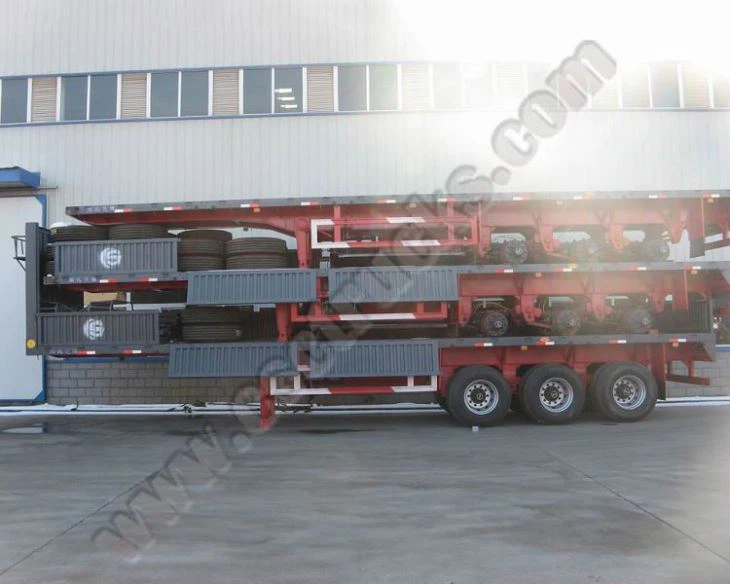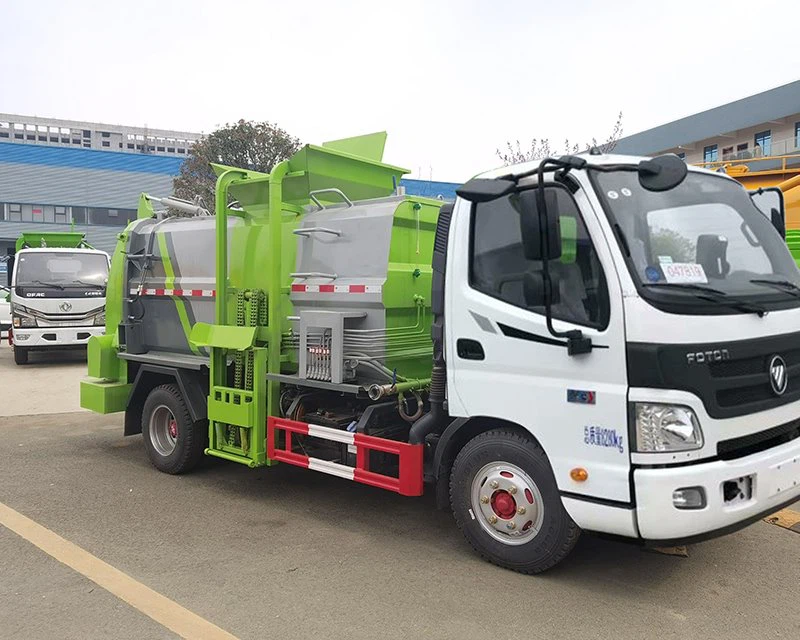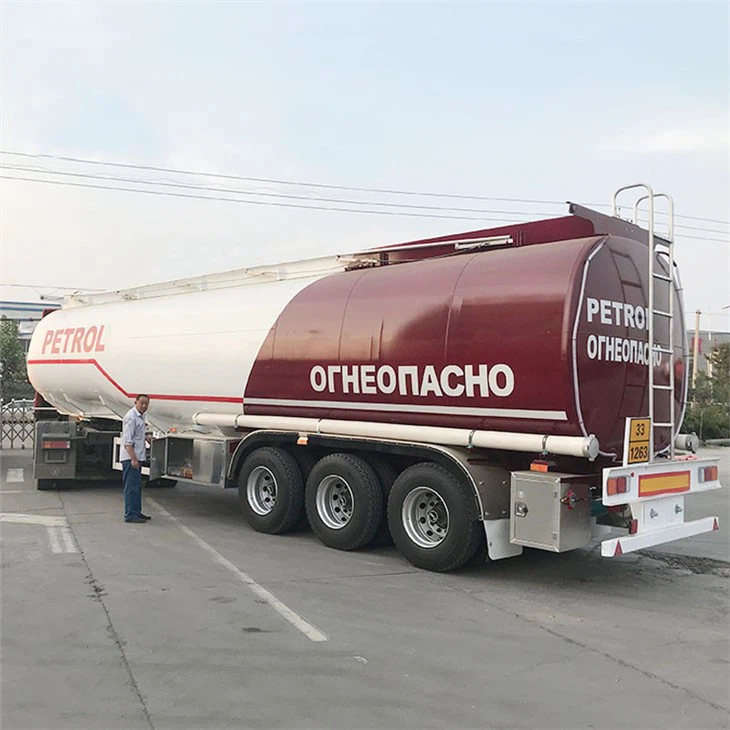Understanding Roll Off Truck Parts: A Comprehensive Guide

Introduction
Roll off trucks are indispensable in the waste management and construction industries, designed for transporting large containers with ease. With their robust construction and versatile applications, these trucks rely heavily on various components working in harmony. Understanding roll off truck parts not only allows for better maintenance but also contributes to increased operational efficiency. In this article, we will delve deeply into the essential parts of roll off trucks, their functions, common issues, and replacement tips.
The Anatomy of Roll Off Trucks
What is a Roll Off Truck?
A roll off truck is a specialized vehicle designed to transport roll-off containers for waste, debris, or building materials. The container can be loaded and unloaded using a hydraulic system, making these trucks highly efficient for various tasks.
Key Components of Roll Off Trucks
| Component | Description |
|---|---|
| Chassis | The main framework of the truck that supports all other components. |
| Hydraulic System | Enables the lifting and lowering of the roll-off container. |
| Container | The detachable unit used for collecting waste or materials. |
| Winch | A device that assists in securing and releasing the container. |
| Axles | Support the weight of the truck and distribute load evenly. |
| Brakes | Essential for stopping the vehicle safely and maintaining control. |
| Electrical System | Controls various functions including lights and hydraulic operations. |
Detailed Breakdown of Roll Off Truck Parts
Chassis
The chassis is the backbone of the roll off truck, providing structural integrity and housing components like the engine and transmission. A well-constructed chassis can enhance the truck’s durability and performance.
Maintenance Tips for Chassis
- Regularly inspect for rust and corrosion, especially in high-moisture areas.
- Ensure bolts are tightened to prevent loose components.
- Perform routine weld inspections for structural integrity.
Hydraulic System
The hydraulic system is what enables the roll off truck to lift and lower containers. It consists of hydraulic pumps, hoses, cylinders, and valves. Proper maintenance of this system is vital for the truck’s operation.
Common Hydraulic Issues
- Leaking hydraulic fluid can indicate a worn-out hose or cylinder.
- Poor lifting performance might stem from insufficient hydraulic fluid or a failing pump.
Container
The container is the part that collects waste or materials. Roll off containers come in various sizes, typically ranging from 10 to 40 yards. Their versatility makes them suitable for residential and commercial projects.
Choosing the Right Container Size
It’s essential to assess the volume of waste or materials before choosing a container size. Here’s a quick reference table:
| Container Size | Typical Use |
|---|---|
| 10 Yard | Small renovations and clean-ups |
| 20 Yard | Medium-sized projects and home remodels |
| 30 Yard | Large renovations, construction jobs |
| 40 Yard | Major construction projects and commercial purposes |
Winch

The winch is key to the roll-off system, helping to secure the container during transport and release it at the destination. It uses a cable that wraps around a drum to pull the container onto the truck.
Best Practices for Winch Maintenance
- Regularly inspect the cable for fraying or wear.
- Ensure the winch operates smoothly by lubricating parts as recommended.
- Check for any loose fasteners that may need tightening.
Axles
Axles are critical for the stability and performance of roll off trucks, supporting the load and allowing for efficient movement. They distribute weight evenly to prevent damage to the truck and road.
Signs of Axle Issues
- Increased vibration during transport may indicate worn bearings.
- Noisy operation can suggest a problem with the differential or bearings.
Brakes
Brakes are fundamental for safety, ensuring the truck can stop effectively under load. Regular brake maintenance is essential to prevent failure.
Brake Maintenance Checklist
- Inspect brake pads for wear and replace as necessary.
- Check brake fluid levels regularly.
- Address any unusual noises immediately to prevent accidents.

Electrical System
The electrical system controls various functions in the truck, including power to the lights and hydraulic system. Troubleshooting electrical issues can often be complex.
Common Electrical Problems
- Dim or non-functional lights can indicate blown fuses or faulty wiring.
- Hydraulic system failure may stem from electrical control issues.
Importance of Regular Maintenance
Regular maintenance of roll off truck parts is crucial for ensuring efficiency, safety, and longevity. Neglected maintenance can lead to costly repairs and downtime. Scheduling routine inspections, replacing worn parts, and addressing minor issues promptly can save time and money in the long run.
Practical Tips for DIY Maintenance
Tools Needed
Before diving into maintenance tasks, ensure you have the right tools, including:
- Wrenches and sockets
- Hydraulic fluid
- Brake cleaner
- Lubrication oil
- Safety gear (gloves, goggles)
Step-by-Step Maintenance Guide

- Inspect the Truck: Begin with a thorough visual check for any obvious damage.
- Change the Oil: Follow the manufacturer’s recommendation for oil change intervals.
- Check and Change Filters: Air and fuel filters should be replaced regularly.
- Evaluate the Hydraulic System: Check for leaks and ensure fluid levels are correct.
- Inspect Brakes: Evaluate the brake pads and fluid levels to ensure safety.
- Clean Electrical Connections: Ensure all wires and connections are free from corrosion.
Finding Quality Roll Off Truck Parts
When it comes to sourcing parts for roll off trucks, ensuring quality is paramount. Here are some practical tips:
- Research Suppliers: Investigate suppliers and read reviews to ensure reliability.
- Purchase OEM Parts: Original Equipment Manufacturer (OEM) parts often provide the best fit and reliability.
- Compare Prices: Don’t settle for the first price; comparison shopping can save money.
- Check Warranty: Ensure parts come with a warranty for peace of mind.
Frequently Asked Questions (FAQ)
1. What are the most critical parts of a roll off truck that require regular maintenance?
The hydraulic system, brakes, and chassis are critical for operational safety and efficiency. Regular checks and maintenance of these components are essential.
2. How often should I perform maintenance on my roll off truck?
It is advisable to perform routine maintenance checks every 5,000 to 7,500 miles, along with regular inspections before and after use.
3. Can I replace roll off truck parts myself?
Many truck owners can undertake basic maintenance tasks, but more complex repairs may require professional help to ensure safety and reliability.
4. What should I do if my hydraulic system is leaking?
Shut down the truck immediately and inspect the hydraulic hoses and cylinders. Replace any damaged components before further use.
5. How do I choose the right size roll off container?
Assess the volume of waste or materials you need to transport. For small clean-ups, a 10-yard container may suffice, while large jobs may need up to 40 yards.
6. Are aftermarket parts a good choice for roll off trucks?
Aftermarket parts can be a cost-effective alternative, but ensure you choose high-quality parts from reputable manufacturers for optimal performance.
